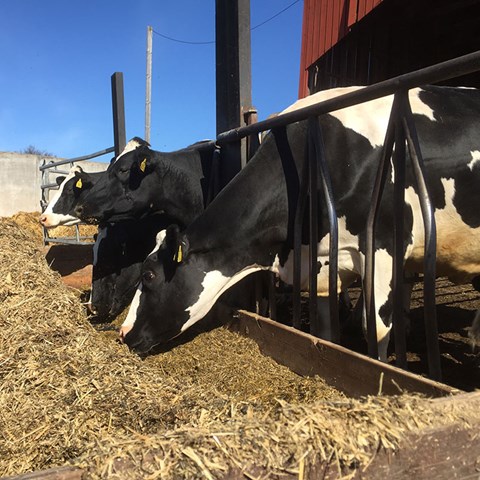Facts:
Material from the project
"Feed Additive to Reduce Methane Emissions from Cows Tested in Sweden"
- News article from SLU in September 2023
"Feed efficiency in dairy cows: individual cow variability in component traits"
- a PhD dissertation by Abdulai Guinguina
"Residual carbon dioxide as an index of feed efficiency in lactating dairy cows"
- a scientific article in Journal of Dairy Science
“Postpartum responses of dairy cows supplemented with cereal grain or fibrous by-product concentrate”
- a scientific article in Livestock Science
“Between-cow variation in the components of feed efficiency”
- a scientific article in Journal of Dairy Science
“The effects of energy metabolism variables on feed efficiency in respiration chamber studies with lactating dairy cows”
- a scientific article in Journal of Dairy Science
"The use of an upgraded GreenFeed system and milk fatty acids to estimate energy balance in early-lactation cows"
- a scientific article inJournal of Dairy Science
